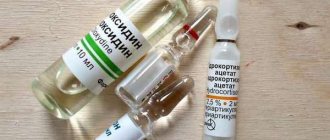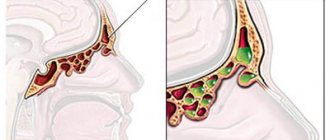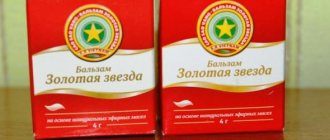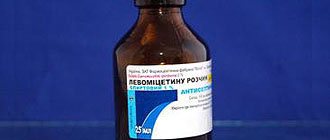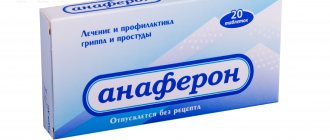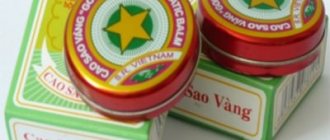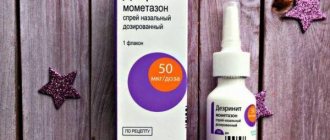Characteristics of Cefazolin and its action
Cefazolin is a representative of the first generation of cephalosporin antibiotics. It is produced in the form of sodium salt by many foreign and domestic pharmaceutical companies. The powder is packaged in bottles of 0.5, 1 and 2 g.
Cefazolin has bactericidal properties. They manifest themselves by disrupting the process of formation of the cell walls of bacterial organisms, which causes their death.
The antibiotic acts on gram-positive microbes, some gram-negative bacteria, as well as spirochetes and leptospirosis.
The drug is used only in injection form, as it is destroyed in the gastrointestinal tract. Its highest content in the blood is observed 50-60 minutes after intramuscular administration. The kidneys ensure that the drug is eliminated from the body.
Use of Cefazolin during pregnancy
Clinical studies of the effect of Cefazolin on fetal development have not been conducted. However, it has been established that it can enter the blood of the fetus through the blood of the expectant mother. Doctors do not recommend taking it without special indications for pregnant and premature babies.
In case of severe infection of the urinary organs or other systems, injections are recommended for the mother’s health reasons. Due to the fact that Cefazolin is only a half-synthetic first-generation antibiotic, it does not cause severe side effects and can be used with caution during pregnancy.
Advantages and disadvantages of the product
If we compare Cefazolin with other antibacterial agents, we can highlight its characteristic advantages and disadvantages.
Benefits include:
- high antibacterial activity,
- action against many pathogenic microbes,
- a small number of contraindications,
- possibility of selecting individual doses,
- can be used both intramuscularly and intravenously.
Disadvantages of the drug:
- exists only in injection form, which makes its administration painful,
- does not affect rickettsia, protozoa, indole-positive strains of Proteus, fungi and viruses,
- may provoke the development of side effects,
- need to be administered every 6-8 hours.
Analogues of Cefazolin
Analogues are drugs that have a similar therapeutic effect. They may contain the same active substance or an analogue of its derivatives. At the same time, analogues may have different contraindications and side effects that differ from the action of the main drug. You need to remember this when buying such drugs in pharmacies.
In general, analogs, together with the main drug, are included in the same pharmacological group of drugs. Such drugs are selected when there is an allergy or intolerance to one of the components of the drug. Only the attending physician can choose the appropriate analogue of the drug.
In addition to analogues, there are synonyms that give different names to tablets that contain one active substance, in this case Cefazolin. Such drugs differ only in the price set by the drug manufacturer. Such drugs are also called generics, since they are cheaper, but act the same as the more advertised drug. Cefazolin analogues of this type include:
- kefzol;
- totacef;
- cefezol;
- cefopride;
- orpin;
- cefopride;
- ancef;
- lysoline;
- ifizol;
- nacef;
- zoline
One of the most popular analogues, belonging to the same pharmacological group as Cefazolin itself, are Cefazol and Kefazol. They can also be purchased in pharmacies when prescribed by a doctor for the treatment of infectious sinusitis in adults and children.
Diseases for which Cefazolin is used
This cephalosporin antibiotic can be used for diseases that were caused by pathogenic microbes susceptible to its action.
Indications for the use of Cefazolin are:
- pleural empyema,
- pneumonia,
- bronchitis,
- sinusitis and other diseases of the ENT organs,
- endocarditis,
- burn infections,
- osteomyelitis,
- syphilis,
- mastitis,
- gonorrhea,
- sepsis,
- peritonitis,
- infected wounds,
- septicemia,
- infectious lesions of joints and bones.
Efficacy for sinusitis
It is possible to use Cefazolin for sinusitis. It exhibits its destructive effect on most microbes that cause this disease. In addition, the medicine penetrates well into tissues, providing high levels in areas of inflammation. This makes it possible to localize the inflammatory process and prevent its spread further.
Since Cefazolin is used only as an injection, it is most often prescribed for treatment in a hospital setting. In addition to the antibiotic, other medications are prescribed to normalize nasal breathing, eliminate swelling of the nasal mucosa, facilitate the outflow of purulent and serous contents of the sinuses, etc.
How to take Cefazolin for various forms of sinusitis
Sinusitis can take acute and chronic forms. If sinusitis with serous discharge appears after a cold, the doctor may prescribe Cefazolin to relieve inflammation and eliminate purulent discharge. To do this, the doctor identifies the cause of the infectious inflammation and specifies the type of sinusitis, which may be based on its etiology:
- viral;
- bacterial aerobic;
- bacterial anaerobic;
- fungal;
- traumatic;
- allergic;
- mixed;
- endogenous;
- perforative.
Having identified the etiology of sinusitis, the doctor prescribes the most effective medicine. Cefazolin is effective for sinusitis only if its etiology is bacterial. The doctor prescribes a certain number of Cefazolin injections for adults, 250-500 mg every 8-12 hours for 10 days. The daily dose of the drug can range from 1000 mg to 4000 mg. In severe forms of infection, injections are given every 6 hours.
Prepare an injection solution directly in a vial, into which an isotonic solvent is introduced in the form of 5% liquid glucose or sodium chloride.
The drug should be administered very slowly, over 4-5 minutes. It is also administered using droppers: 60-80 drops per minute.
It is quite difficult to carry out treatment with this medicine on your own, since injections require the use of professional manipulations and special medical equipment. Typically, a doctor prescribes such procedures to a patient who comes to the clinic for injections, or is seen at home by a medical professional. The use of even such a weak antibiotic is justified only if indicated. At the first symptoms of sinusitis, which has not taken a severe purulent form, you can use natural remedies to relieve inflammation
At the first symptoms of sinusitis, you can use preventive measures that will help strengthen the body. Healthy lifestyle: psychology, medicinal plants and traditional medicine recommend the use of decoctions for rinsing the nasopharynx, which help relieve swelling and inflammation, without leading the infectious process to the appearance of purulent discharge.
To do this, drip 10 or more drops of the prepared decoction into one nostril on the sore side several times a day. You can use decoctions of chamomile, calendula, garlic juice diluted in boiled water or a saline solution. At the initial stage of inflammation, natural antibiotics and bacterial agents of natural origin can be used.
Rinsing the nostrils with decoctions can be alternated with warm oil compresses.
Having finished with one half of the nose, you can return to it again in a few hours. In this way, without the use of synthetic antibiotics, it is possible to relieve the first symptoms of inflammation of the nasal mucosa at the initial stage, preventing the infection from penetrating into the upper sinuses.
You can also use pharmaceutical drops to prevent stagnation of mucus and the development of microbial microflora in it. Several washes a day will help get rid of the unpleasant symptoms of sinusitis. When using rinsing solutions, choose two or three of the most effective remedies to avoid getting used to their therapeutic effect.
Contraindications
Taking the medication is not recommended if you have hypersensitivity to cefazolin itself, as well as to representatives of the cephalosporin and penicillin series. The antibiotic is not used in the treatment of pregnant women, premature babies and infants under 1 month.
Particular caution is required when prescribing the drug to people suffering from kidney, liver and intestinal diseases, as well as with an increased risk of bleeding.
Possible unwanted effects
Cefazolin can cause the development of various side effects. Some of them go away on their own after treatment, while others may require emergency medical attention. When taking the drug, the following may occur:
- diarrhea,
- skin rashes and itching,
- Quincke's edema,
- bronchospasm,
- convulsions,
- kidney dysfunction,
- anaphylaxis,
- hives,
- abnormal blood picture,
- anorexia,
- cholestatic jaundice,
- dysbacteriosis,
- candidiasis,
- vomit,
- pseudomembranous colitis,
- anemia,
- hepatitis,
- stomach ache.
Use of Cefazolin in children
Injections can be prescribed to children of any age, as long as they do not have renal failure or other kidney pathology. For young children, injections can only be prescribed by a pediatrician if there are vital indications with an individually selected dose. Children over 5 years old can be given Cefazolin injections at a dose of 500 mg.
The use of such a drug should only be prescribed by the attending physician, as it can cause side effects with long-term use in the form of:
- diarrhea;
- pain in the gastrointestinal tract;
- Quincke's edema;
- skin rashes and itching;
- disturbances in the activity of the nervous system;
- urinary incontinence.
For the use of Cefazolin, children should always have strong clinical indications, which are determined only by the attending physician.
Recommendations for use
The dose, frequency of injections and duration of treatment are determined by the attending physician on an individual basis. This takes into account the severity of the disease, the susceptibility of pathological microbes to the drug, the presence of concomitant diseases in the patient, as well as his age and weight. You cannot change the dose of the medicine at your own discretion.
The medicine can be administered into a vein (drip or stream) in emergency conditions requiring immediate treatment. In the normal course of the disease, intramuscular administration is used. Before the first administration, it is necessary to conduct a skin test to identify a possible hypersensitivity reaction.
The antibiotic powder must be dissolved before use. The ideal solvent is isotonic sodium chloride solution. It is suitable for any method of administration. For intramuscular injections, it is allowed to use water for injection, a solution of novocaine and lidocaine as a solvent. When administered intravenously, glucose can be used. It is prohibited to mix Cefazolin with other medications in the same bottle or syringe.
Injections for sinusitis must be injected deep into the gluteal muscles. Typically injections are given every 6-8 hours.
The duration of treatment depends on the severity of the disease. Injections are administered another 1-2 days after all symptoms of the disease disappear to prevent the development of superinfection. On average, the course of treatment can range from 5 to 14 days.
Types of Markov drops
New drugs cannot yet be purchased in pharmacies; they are not produced by pharmaceutical companies. But to purchase them, you don’t have to go to Yaroslavl. They can be ordered from pharmacists specializing in the manufacture of medicines. The prescription is written by an otolaryngologist, based on the clinical picture.
The drops are packaged in dark glass bottles, volume - 10 ml. A dispensing pipette is included in each package. The basis of all compositions is starch-agar gel.
Drops No. 1
Used to treat sinusitis when purulent discharge has accumulated in the sinuses. Used to treat adults and children over 2 years of age. It contains a solution of zinc sulfate, streptocide (sulfanilamide) and galazolin. They relieve the unpleasant symptoms of sinusitis - nasal congestion and headache due to the inflammatory process and lack of oxygen supply. Local impact on the pathogenic focus accelerates recovery. Contraindications: 1st-2nd trimester of pregnancy, lactation. With caution in the 3rd trimester. Duration of use: 5-6 days.
Drops No. 2
This composition is also repurposed for the treatment of sinusitis, but of allergic etiology. The adrenergic agonist galazolin is combined with diphenhydramine, which has an antihistamine effect. This component not only suppresses the response to allergen introductions, but has an antispasmodic and anesthetic effect, and improves sleep. Drops can be used for prophylactic purposes, to prevent bronchospasms that occur against the background of hay fever.
The duration of the therapeutic course is no more than 2 weeks. Allowed for use during lactation, diabetes, and angina. During pregnancy, it is prescribed with caution, under the supervision of a physician, if the benefit to the mother outweighs the possible harm to the fetus.
Drops No. 3
This composition is the most popular, since this type of drug is used more often than others. The medicine was developed to stop ARVI at an early stage. If they start dripping at the first symptoms of the disease, rhinitis is mild, does not cause complications and does not become chronic.
The complex composition includes:
- galazolin;
- thymogen;
- sodium sulfacyl (albucid).
The three-component drug suppresses inflammation, restores breathing, and accelerates recovery. Not used for rhinitis of allergic etiology: it can provoke an exacerbation and transition of the disease to an atrophic form.
Drops No. 4
There are 2 options for multi-component composition. The first includes: galazolin, diphenhydramine, gentamicin and hydrocortisone. In case of allergy to aminoglycosides, gentamicin is replaced with the more modern antibiotic cefazolin. Upon contact with the mucous membrane, the active substance is absorbed by 85% within 15 minutes, penetrates bone tissue, synovial and pleural fluid, binds to plasma proteins, and quickly inhibits the vital activity of gram-positive bacteria. The antibacterial component is neutral to anaerobes.
Indications for use: complications after ARVI with purulent discharge, sinusitis, sinusitis. The effect of use is felt after the first dose. Swelling decreases, breathing becomes easier. The therapeutic effect is achieved when used for 5 days. If you stop using it after the characteristic symptoms disappear, there is a high risk of the formation of an inflammatory focus. With repeated infection or hypothermia, a relapse of the disease is possible.
Drops No. 5
This remedy helps get rid of chronic runny nose, the symptoms of which are frequent nasal bleeding and thinning of the mucous membrane lining the nasal mucosa.
Read more Phenylephrine - eye drops for children
The drug includes: galazolin, diphenhydramine, dioxidine and aminocaproic acid. The drug prevents the development of ozena - atrophic rhinitis, helps restore the sensitivity of the mucous membrane.
A more complex version of drops No. 5 is used for a runny nose of fungal etiology.
Composition ingredients: galazolin, mezaton, miramistin, hydrocortisone, gentamicin.
Miramistin - has an antimicrobial effect, suppresses the vital activity of gram-positive and gram-negative bacteria and fungal flora - ascomycetes, yeast-like fungi and some others. Suppresses inflammation and increases local immunity.
Self-medication is unacceptable. Drops No. 5 are available only with a doctor's prescription. The dosage and regimen of use are determined for each patient individually; correction of the therapeutic regimen is possible based on the clinical picture. If the recommended dosage is violated or if intolerance develops, side effects occur: increased flatulence, diarrhea or constipation, tachycardia, nausea, chest pain. In rare cases - convulsions.
Drops No. 6
This is a modified version of drops No. 5. To enhance effectiveness, an antibacterial component is added to the composition - your choice of gentamicin or cefazolin.
Prescribed for the treatment of chronic rhinitis in the presence of pathogenic foci in the paranasal sinuses or tonsils.
Another composition is also possible: dioxidin, galazolin, miramistin, mezaton and dexamethasone.
- Mezaton, the active substance is phenylephrine hydrochloride. Narrows capillaries, reduces the permeability of the mucous membrane, has a prolonged effect.
- Dexamethasone is a synthetic glucocorticosteroid that quickly suppresses inflammatory processes, blocks the production of histamine, and eliminates intoxication.
Before use, it is advisable to test infectious agents for resistance to the antimicrobial component. If no improvement is observed after twice use, the composition is adjusted or another drug is prescribed. High likelihood of side effects.
Drops No. 7
Prescribed for acute rhinitis and sinusitis caused by bacterial infection, and complications after ARVI. Used to treat adult patients and used in pediatric practice. The drug contains 4 active ingredients - galazolin, hydrocortisone, gentamicin and aminocaproic acid.
After two-time administration, swelling and hyperemia disappear, breathing is restored. After 2 days, the risk of developing capillary bleeding is reduced by 75-82%.
Use of the drug in certain groups of patients
Due to insufficient data confirming the safety of Cefazolin in pregnant women, it is not prescribed to this category of patients, especially in the 1st trimester.
The antibiotic passes into breast milk in small quantities, which can negatively affect the baby in the form of dysbacteriosis, superinfection, the development of an allergic reaction, etc. Therefore, during treatment with the drug, as well as until it is completely eliminated from the body, breastfeeding should be interrupted.
No studies have been conducted on the use of the drug in the treatment of children under 1 month of age. Therefore, the use of the drug for newborns is not recommended.
Patients with impaired renal function require a reduction in doses to the minimum effective, since the drug can accumulate in the body due to poor excretion, which will lead to an overdose.
Where to buy Cefazolin and the average cost of the drug in pharmacies in Russia and the CIS
In pharmacies, the drug can be dispensed without a prescription, since there is no precise definition of the drug: Cefazolin is an antibiotic or not. This is explained by the fact that the medicine is a first generation antibiotic and can sometimes be dispensed without a prescription.
If pharmacies can receive government support in exchange for dispensing such drugs that treat sinusitis in its purulent form, they may require a prescription from a doctor when purchasing Cefazolin.
When buying such medicine at a pharmacy, always look at its composition and date of manufacture. This will avoid purchasing a medicine that has expired.
Prices for Cefazolin in pharmacies.
- Cefazolin powder 1 g 20 rub.
- Cefazolin powder for solution 1g No. 1 bottle 25 rub.
- Cefazolin powder for solution 1g No. 1 bottle /LECCO/ 26 rub.
- Cefazolin powder for solution 1g No. 1 fl 26 rub.
- Cefazolin powder for injection 1 g N1 fl 27 rub.
- Cefazolin powder for solution 1g No. 1 bottle /Kraspharma/ 31 rub.
Cefazolin Sandoz powder for solution 1g No. 1 bottle 96 rub. In general, this drug has never demonstrated any pronounced side effects or contraindications. Its action has been tested by clinical practice. But the use of a medicine that is aimed at penetrating the cells of simple microbes and acting as a carcinogen should only be used on the recommendation or prescription of the attending physician.
Even if such a drug is sold in a pharmacy without a prescription, it is not recommended to take it yourself.
Cefazolin is a carcinogen. Its course must last a certain amount of time. Only the attending physician can prescribe the correct treatment regimen.
Concomitant use with other medications
It is necessary to inform your doctor about all medications you are taking, since with some of them Cefazolin may enter into drug interactions that negatively affect the body.
It is not recommended to take antibiotics together with:
- tetracyclines,
- sulfonamides,
- erythromycin,
- chloramphenicol,
- heparin,
- aminoglycosides,
- probenecid,
- anticoagulants,
- loop diuretics.
